Good news dairy cows, and farm pigs! In April, The Huffington Post reported that interest in vegan diets are on the rise in 2013, as Google Trends noted a 22 percent increase for the search word “vegan” over the course of a year.
From celebrity endorsements (Bill Clinton, included), insanely informative documentaries, and the emergence of vegan-friendly restaurants all over the place, it is only natural that vegans are sprouting up like carrots across the country. Despite the fact that America is saturated by Cool Ranch Doritos Shelled Tacos and GMO-addled sugar cereals, I’d like to think that veganism is gaining popularity because the benefits of a animal byproduct-free diet are truly all-encompassing and cannot be denied. Those who succeed in nixing meat, poultry, fish, eggs, and dairy from their diets can attest to the many advantages that come with maintaining a plant-based meal plan. Ask any vegan—I’m sure you know at least one, I mean, this is Brooklyn after all—and they’ll tell you all about how the way they eat has either improved their health, aided in weight loss, helped the environment—slaughterhouses are a huge contributor to pollution—or all of the above.
So if you want to lose a couple pounds this summer and get the beach bod of your Montauk dreams, or just want to eat better in general, I recommend you head to some of the many vegan restaurants right here in Park Slope. They’ll show you how it’s really done.

VSPOT | 156 5th Avenue
Orgasmically good, VSpot is the definitive G-spot for vegans in the Slope. Maybe you’ve tried some of their pre-packaged empanadas or breakfast burritos at health-food inclined delis in the neighborhood, which are pretty tasty, but nothing beats the real deal, served fresh at their Fifth Avenue location. The menu is ripe with Latin-inspired, animal byproduct-free dishes like the Chipotle Seitan Wrap—with seitan, avocado, chipotle refried beans, tomato, vegan mozzarella and cheddar cheese, coddled in a whole wheat wrap—and the gluten-free Portobella Spinach Tacos, in soft corn tortillas with mushrooms, spinach, chipotle refried beans, and avocado, served with a side of black beans, vegan cheese, and sweet plantains. The menu also includes some comfort food favorites like Quinoa Macaroni and Cheese and Eggplant Parmigiana, which is cooked with Kosher wine. I recommend the Kale Tostadas and the Whole Wheat Lasagna, which I once made the mistake of sharing with one of the 4-year-olds I babysat for as he ended up finishing the whole thing!

SUN IN BLOOM | 460 Bergen Street
As a vegan it can be hard to date omnivores. Mostly because you want to cook together, you want to go out to dinner together, and above all, you want to brunch together. When I was dating a pescatarian bro in Park Slope a couple of years ago, Sun In Bloom was our go-to brunch spot. Right over on Bergen Street and Flatbush Avenue, the kitchen serves up super fresh and delicious plant-based meals . He would order the Irresistible Granola Delight with Goji Berries (homemade raw granola, coconut kefir, and fresh fruit), and I took a liking to their famous Vegan Apple Pancakes. While that romance has fizzled out, I still have a burning lust for the Western Burrito, with sunflower pâté, salsa, avocado, zucchini, and cabbage smothered in sunflower dill dressing, tucked in a collard green wrap. Clean, satiating, and zesty as ever.
‘SNICE | 315 5th Avenue
When you go vegan, you don’t have to give up the food you love most, and by “the food you love most” I obviously mean sandwiches. ‘Snice on 5th Avenue and 3rd makes seriously incredible meat-free and also dairy-free subs. For a fair $8.75 you’d be silly not to order their Thanksgiving Leftover Sub which is comprised of Tofurky, sweet potatoes, brussel sprouts, cranberry relish, and “gravy” sauce. I’m also a fan aof their grilled cheese, made with Daiya (a tapioca based cheese alternative). They also deliver, which rules when you want to order lunch and are too lazy to make it yourself as I often am.
TOFU ON 7TH | 226 7th Avenue
Similar to Vegetarian Palate, Tofu on 7th’s menu bills all of your best-loved vegan-style Asian dishes, prepared with soy-based meat substitutes. Don’t let the name mislead you though—Tofu on 7th also serves beef, pork, poultry, and seafood, so this restaurant is an appropriate dining option when you’re trying to chow down with a carnivore. Their Vegetarian Triple Delight—with bok choi, tomato, tofu, and black mushrooms in brown garlic sauce served on a sizzling platter—is equal parts healthy and scrumptious, as is my dish of choice, the Buddhist Heaven—with shredded soy chicken, leeks, and bean sprouts, swimming in ginger brown sauce.
PIZZA PLUS | 359 7th Avenue
How many times have I heard, “How do you do it? I could never give up pizza!” Little do all these pizza-heads know, vegan pizza is a thing. And guess what? You can get it in Park Slope. Pizza Plus on Seventh Avenue may seem like your run-of-the-mill Italian joint, but the dairy-free crowd in the area can delight in the fact that a small vegan pie can be theirs for the low-low price of nine dollars. A large will run you fifteen dollars. Hook yourself up and order broccoli, mushrooms, tomatoes, and onions on top!
 BOGOTA LATIN BISTRO | 141 5th Avenue
BOGOTA LATIN BISTRO | 141 5th Avenue
If I can speak frankly, every day of the summer should be a guacamole-laden fiesta. To reach vegan Mexican food heaven, I suggest popping in to Bogota Latin Bistro on Fifth Avenue and ordering a quesadilla ASAP (made with soy cheese, of course). Not only is this a great date spot in general, but the menu includes both meat and plant-based dishes. Many menu items can be prepared vegan upon request. Their salads are super fresh and made with intriguing ingredients like the Pom Palm, with hearts of palm, pomegranate, avocado, mango, watercress, cilantro dressing. Another great option for the cruelty-free crowd at Bogota is the BBQ Tofu Steak, mainly because the grilled slab of tofu is drenched in fierce mango barbecue sauce. Basically what I’m saying is… la comida está muy buena!



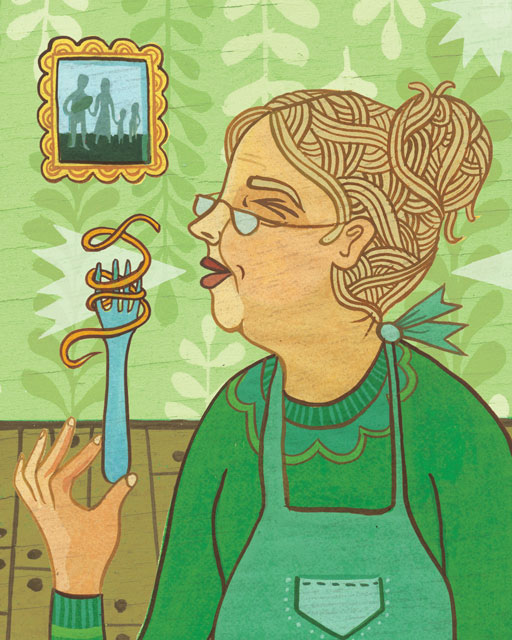 My kids put the “din” in dinner. I don’t mind the cacophony, most of the time. Being a city girl, I’ve always found the sound of silence deeply unsettling and if I had to choose, I’d opt for a vibrant racket over a tense, quiet meal any day. Of course, if there were a middle-of-the-road option, a little-light-conversation-peppered-with-soft-chuckling option, I’d go with that.
My kids put the “din” in dinner. I don’t mind the cacophony, most of the time. Being a city girl, I’ve always found the sound of silence deeply unsettling and if I had to choose, I’d opt for a vibrant racket over a tense, quiet meal any day. Of course, if there were a middle-of-the-road option, a little-light-conversation-peppered-with-soft-chuckling option, I’d go with that.
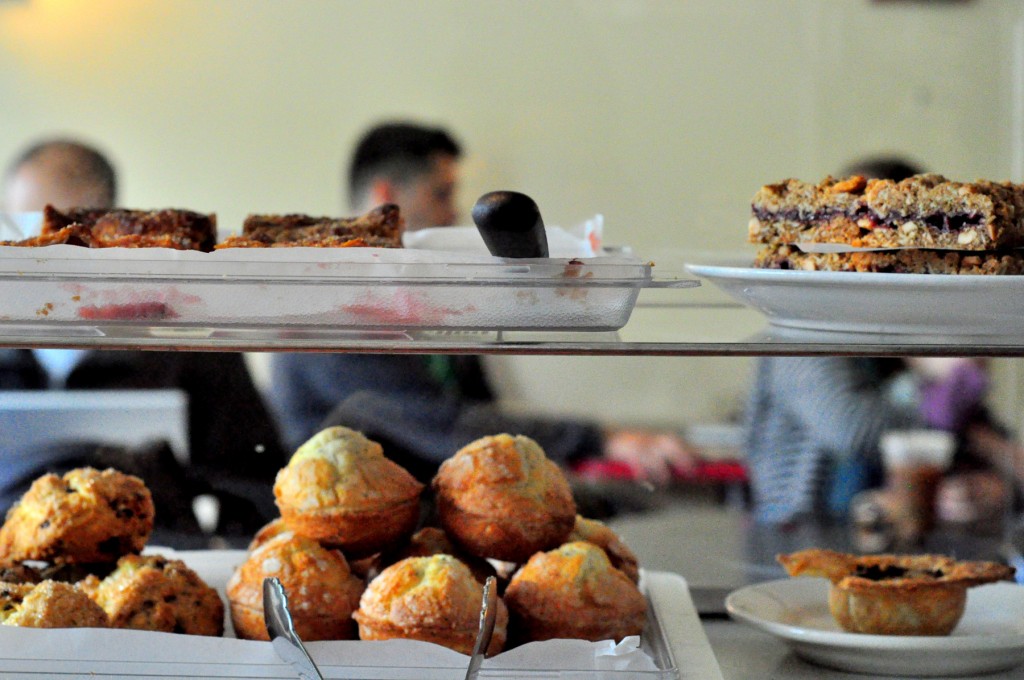
 Lark Cafe
Lark Cafe
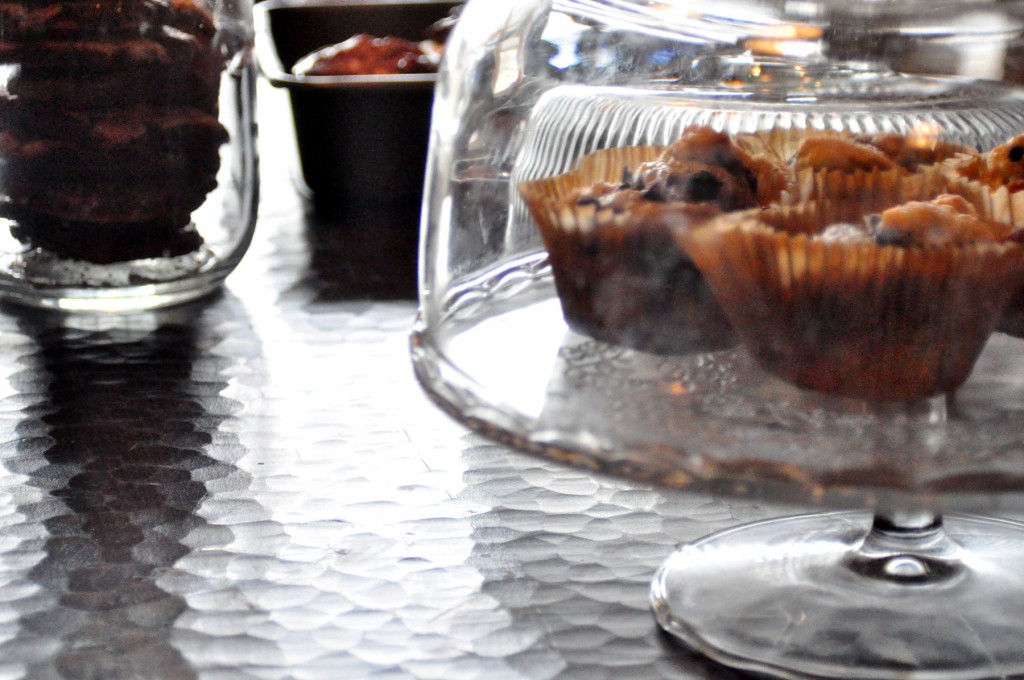

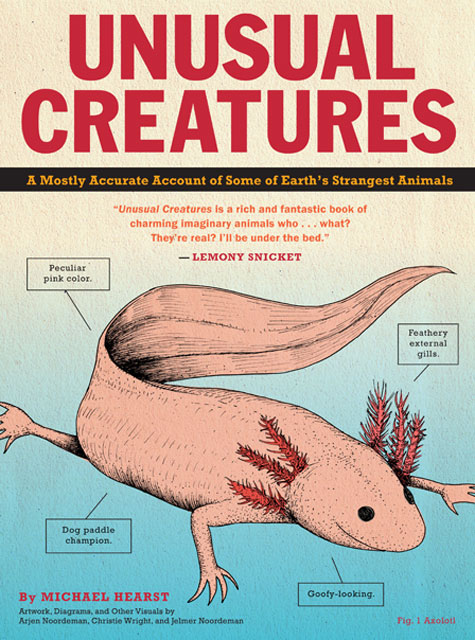 Michael Hearst’s book for children—a collection of profiles of odd animals—is as unique as its title suggests. The format, Hearst says, is a less dry form of the mail order Safari Cards sold on TV when he was a kid. Each profile tells us the Kingdom, Phylum, Class, Order, Family, Genus and Species of the animal, the geographical location, and just what makes it so unusual. For example, the Hammer-headed is a loud-mouth and has a honk that rivals most car alarms. While Unusual Creatures is loaded with information, Hearst’s writing style is clear and easy to understand. It’s perfect for a young audience, and yet if you read the other essays he’s written for grown-ups, you’ll see that he hasn’t really changed his natural voice all that much. There’s no condescension, but there are plenty of jokes—fart jokes, poop jokes, vomit jokes, all the requisites for nine year olds.
Michael Hearst’s book for children—a collection of profiles of odd animals—is as unique as its title suggests. The format, Hearst says, is a less dry form of the mail order Safari Cards sold on TV when he was a kid. Each profile tells us the Kingdom, Phylum, Class, Order, Family, Genus and Species of the animal, the geographical location, and just what makes it so unusual. For example, the Hammer-headed is a loud-mouth and has a honk that rivals most car alarms. While Unusual Creatures is loaded with information, Hearst’s writing style is clear and easy to understand. It’s perfect for a young audience, and yet if you read the other essays he’s written for grown-ups, you’ll see that he hasn’t really changed his natural voice all that much. There’s no condescension, but there are plenty of jokes—fart jokes, poop jokes, vomit jokes, all the requisites for nine year olds.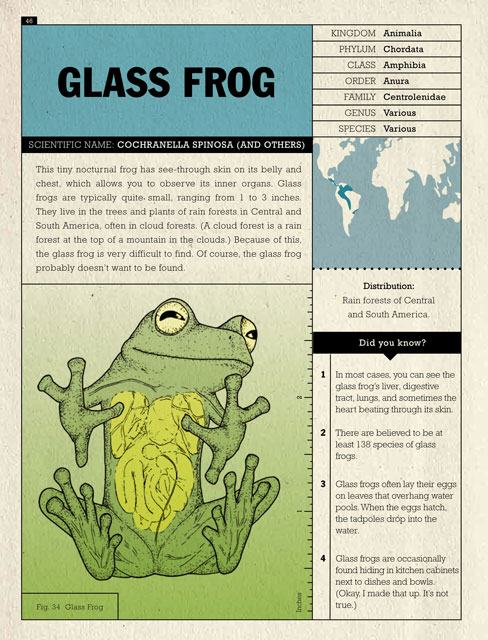 It’s clear from Hearst’s description of his childhood that his parents were very engaged. They didn’t let their son slack off. But it seems like they also understood him. Several times as we spoke he indicated that his mother “forced” him to do one thing or another: take piano lessons, go to college….But he said it gratefully—glad that he wasn’t left to succumb to his own lack of will or inclination.
It’s clear from Hearst’s description of his childhood that his parents were very engaged. They didn’t let their son slack off. But it seems like they also understood him. Several times as we spoke he indicated that his mother “forced” him to do one thing or another: take piano lessons, go to college….But he said it gratefully—glad that he wasn’t left to succumb to his own lack of will or inclination.
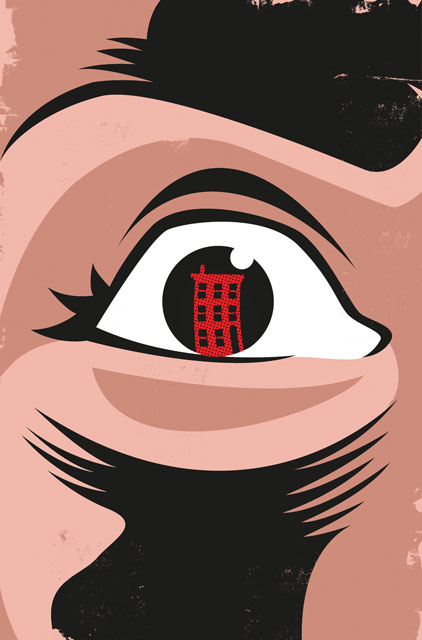 Dear Hypocrite,
Dear Hypocrite, Emerging from their homes, ex-hibernators in Brooklyn have many options to choose from when it comes to gathering with their friends and family and enjoying the long days of spring and summer. The new additions to our neighborhood strive to promote innovations in food, community, and—most importantly—having fun. Butter and Scotch promises to provide all the best things in life under one roof at their dessert-meets-cocktail bar, while Nightingale 9 and Fletcher’s serve up innovative updates on Vietnamese cuisine and barbecue.
Emerging from their homes, ex-hibernators in Brooklyn have many options to choose from when it comes to gathering with their friends and family and enjoying the long days of spring and summer. The new additions to our neighborhood strive to promote innovations in food, community, and—most importantly—having fun. Butter and Scotch promises to provide all the best things in life under one roof at their dessert-meets-cocktail bar, while Nightingale 9 and Fletcher’s serve up innovative updates on Vietnamese cuisine and barbecue.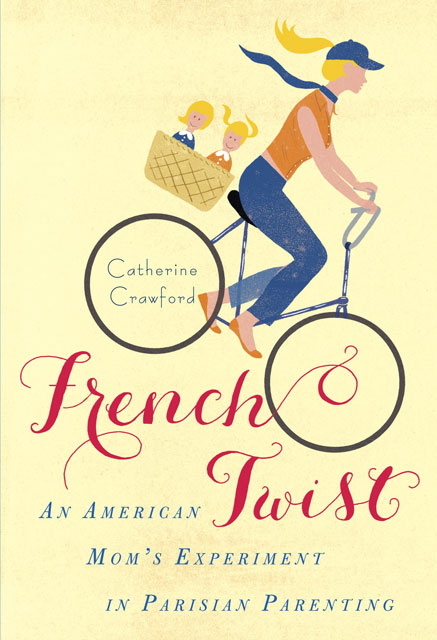 At the risk of being a traitor to my generation, I have to say: even as we have tried harder than any of our ancestors to mentor, please, and encourage our kids, we have completely lost control of them, and in the process we’ve lost control of our own lives as well.
At the risk of being a traitor to my generation, I have to say: even as we have tried harder than any of our ancestors to mentor, please, and encourage our kids, we have completely lost control of them, and in the process we’ve lost control of our own lives as well.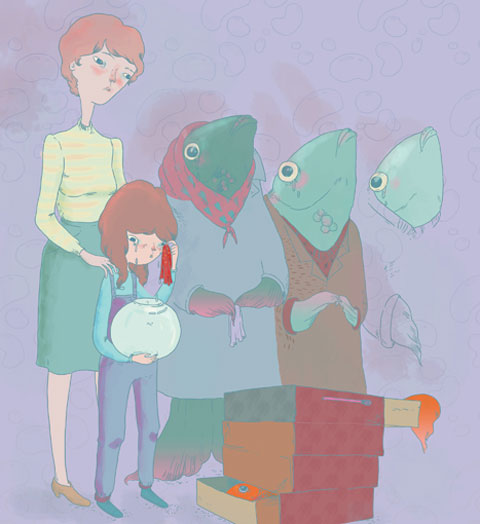 Spring! The season of new life and rebirth! Unless, of course you’re a goldfish in our home, in which case spring is a time of death, plain and simple. Last spring, the death knell rang for the pet we’d come to know ironically as Survivor-Fish, as he joined his brethren on the other side. The good and bad news is that there were a lot of brethren to join—at least four fish from our house alone.
Spring! The season of new life and rebirth! Unless, of course you’re a goldfish in our home, in which case spring is a time of death, plain and simple. Last spring, the death knell rang for the pet we’d come to know ironically as Survivor-Fish, as he joined his brethren on the other side. The good and bad news is that there were a lot of brethren to join—at least four fish from our house alone.